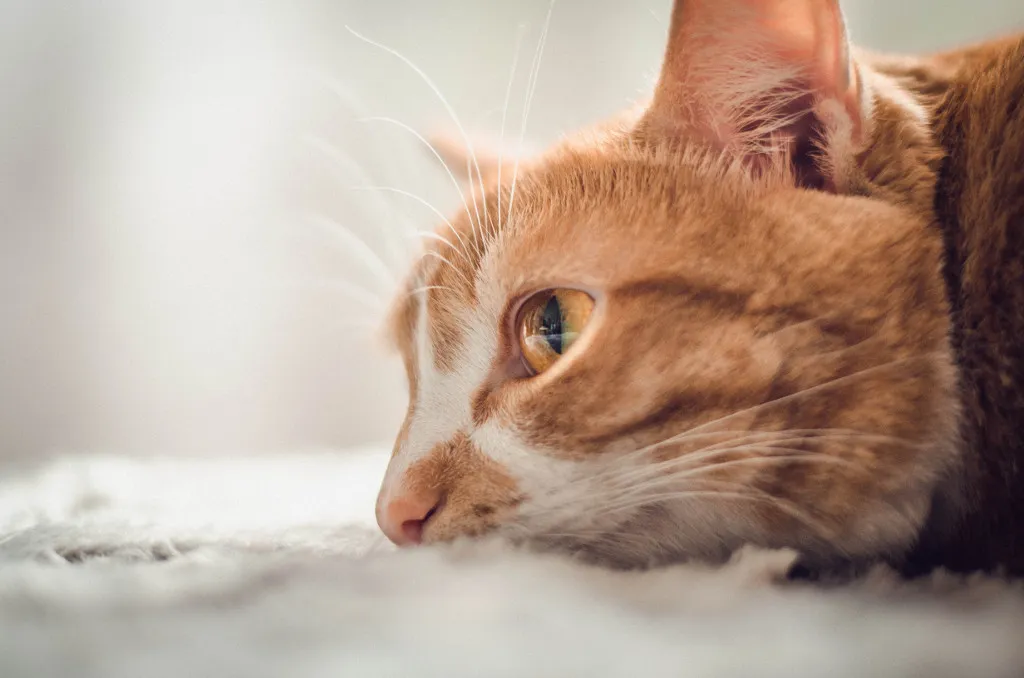Do you want to know more about kidney failure in cats and how to handle it? Here, you will get to know the various signs of kidney failure in cats and how you can handle it.

The kidneys play a vital role in maintaining a cat’s health by filtering waste products from the blood and regulating fluid balance.
Furthermore, kidney failure occurs when these organs gradually lose their ability to function properly.
The signs of kidney failure in cats are often subtle and easily overlooked, leading to delayed diagnosis and treatment.
To help you prevent your cat from having kidney failure, we have outlined the signs that indicate a cat has kidney failure.
These signs will help every cat owner to be aware of their cat’s well-being and health.
Signs of Kidney Failure in Cats Eyes

To know if your cat has kidney failure, here are signs to take note of:
1. Increased Thirst and Urination
One of the early signs of kidney failure in cats is increased thirst and urination.
Furthermore, cats with kidney issues may frequently visit their water bowl and urinate more than usual.
This occurs because the kidneys’ ability to concentrate urine is compromised, leading to the production of more dilute urine.
2. Weight Loss in Cat
Unexplained weight loss is a significant indicator of kidney problems in cats.
In addition, the kidneys play a vital role in filtering waste products from the blood.
When they start to fail, toxins accumulate in the body, leading to weight loss as the cat’s body breaks down muscle tissue for energy.
3. Decreased Appetite in Cat
Most times, cats with kidney failure may show a decreased appetite.
This can occur for various reasons, including the buildup of waste products, nausea, and changes in the cat’s sense of taste and smell.
In addition, a reduced appetite can contribute to weight loss and dehydration.
4. Vomiting and Nausea
Kidney failure can lead to the accumulation of toxins in the cat’s bloodstream, which can cause nausea and vomiting.
If your cat is frequently vomiting or appears nauseous, it could be a sign of kidney problems.
In addition, vomiting can exacerbate dehydration, which is common in cats with kidney failure.
5. Unusable Bad Breath
Cats with kidney issues may have an unusual breath odor, often described as ammonia-like.
In addition, this odor is a result of the accumulation of waste products, such as urea, in the cat’s body.
Bad breath is a notable sign of kidney failure and should not be ignored.
6. Poor Coat Condition
A cat’s coat can provide valuable insights into their overall health.
Cats with kidney failure may have a dry, unkempt, or dull coat.
Also, this is primarily due to poor circulation and dehydration associated with kidney problems.
7. Lethargy and Weakness
Cats with kidney issues may display reduced energy levels.
They might appear lethargic and weak compared to their usual active selves.
Also, this can be due to the physical toll of kidney failure and the accompanying buildup of toxins.
8. Behavioral Changes
Kidney failure can also cause behavioral changes in cats. They may become more irritable, withdrawn, or exhibit unusual behavior patterns.
In addition, these changes can be attributed to the discomfort and overall health decline associated with kidney problems.
In conclusion, recognizing these signs of kidney failure in cats’ eyes is pivotal for providing proactive care and ensuring the well-being of our feline friends.
Early detection and prompt veterinary care can significantly improve the prognosis for cats with kidney issues.
Related Searches:
